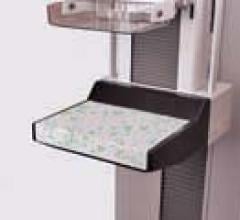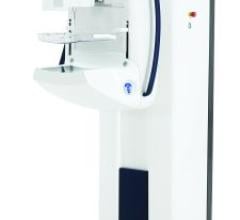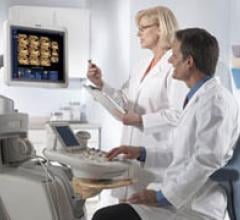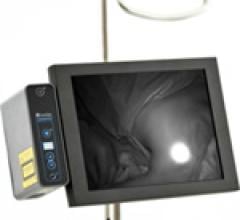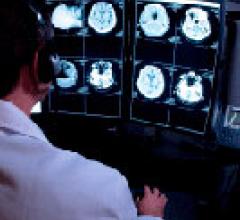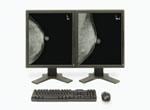September 1, 2010 - The world’s first zero footprint, client-free PACS, has received the highest performance score, 93.4 out of 100, in a recent survey conducted by KLAS, an independent monitor of the quality and customer acceptance of commercially-available healthcare information technology products.
September 1, 2010 - The Certification Commission for Health Information Technology (CCHIT) in Chicago and the Drummond Group Inc.
August 30, 2010 — Limited edition Bella Blankets protective coverlets for mammography feature a new ivy design to help impart a spa-like feeling and decrease patient anxiety about the exam. The ivy design was chosen based on studies that demonstrate images of nature and soft green hues have a calming, soothing effect on the human psyche.
SPONSORED CONTENT — Fujifilm’s latest CT technology brings exceptional image quality to a compact and user- and patient ...
August 30, 2010 - A private mammography clinic in Germany launched the first German mobile screening unit. By offering mobile screening, , Gemeinschaftspraxis für Diagnostische Radiologie und Nuklearmedizin can improve its participation rates as women need to spend less time and cost in transit when attending their screening examinations.
August 30, 2010 – An enhanced version of the Philips iE33 xMatrix cardiac ultrasound system features a new ergonomic transducer for more efficient adult echocardiograms.

SPONSORED CONTENT — Fujifilm’s latest CT technology brings exceptional image quality to a compact and user- and patient ...
August 30, 2010 - The U.S. Food and Drug Administration (FDA) granted clearance for a catheter guidance system.
SPONSORED CONTENT — EnsightTM 2.0 is the newest version of Enlitic’s data standardization software framework. Ensight is ...
August 30, 2010 – A portfolio of advanced quantification solutions for 2-D and 4-D ultrasound imaging were added to ScImage’s PicomEnterprise picture archiving and communications system (PACS). It now directly integrates TomTec’s portfolio of echo quantification solutions.
August 30, 2010 – A strategic alliance has been launched to create New York Radiology Alliance. It will offer access to subspecialists, next-generation technology, clinical data benchmarking and the shared expertise of nearly 200 radiologists nationwide to enhance the quality and efficiency of imaging services for patients and providers in the New York/New Jersey metropolitan area.
August 23, 2010 — The Intego positron emission tomography (PET) infusion system is now listed with Novation LLC, one of the largest healthcare supply contracting companies in the United States. Novation is the first supply contracting company to list Intego and the first to list any automated infusion system for molecular imaging. Novation serves the purchasing needs of nearly 25,000 healthcar
Did you know that approximately one-third of all the data in world is created by the healthcare industry and that ...
August 30, 2010 — In collaboration with Cincinnati Children’s Medical Center and the Davis Heart and Lung Institute of The Ohio State University, GE Healthcare, a unit of General Electric Company, was awarded $1 million for magnetic resonance imaging (MRI) and devices for the “Pediatrics Population” project.
For better or worse, healthcare reform has arrived, and with it comes a contentious debate about the certification of electronic medical records (EMR) systems for meaningful use. Managing large medical image files has long been a challenge even within radiology, yet diagnostic data would seem essential to a physician’s treatment of disease.
In scientific research, sometimes simply connecting two points with a line is enough to paint the big picture. When researchers first identified the biomarker amyloid beta-protein for Alzheimer’s disease by using positron emission tomography (PET) imaging, they gained a new perspective on how to treat the disease.
Having the most efficient clinical workflows with enhanced diagnostic capabilities is a major goal for clinicians and ...
Editor's Note: This article is an introduction to the ultrasound scanning systems comparison chart that ran in the September 2010 issue of Imaging Technology News. The chart can be found under the comparison chart tab at the top of the page.
The applications for ultrasound in medicine have been quite varied. Back in the 1940s, physical therapists used its thermal energy to reduce inflammation, and physicists used high-intensity ultrasound as a surgical tool to treat brain disorders.
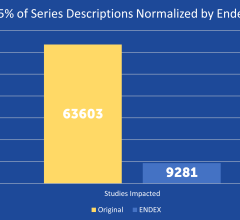
SPONSORED CONTENT — EnsightTM 2.0 is the newest version of Enlitic’s data standardization software framework. Ensight is ...
Despite the continued attacks by policymakers regarding imaging and its impact on healthcare costs, the diagnostic imaging industry is positioned to take on these challenges to not only survive, but also to thrive in the healthcare reform implementation era.
Advancements in newer 64-slice computed tomography (CT) and the introduction of 256- and 320-slice systems are helping to significantly reduce patient exposure to ionizing radiation.
In this era of financial cost cutting, questions are raised over the true need for 256- or 320-slice computed tomography (CT) systems for cardiac imaging. There are many radiologists and cardiologists who argue a 64-slice CT system is good enough to make a cardiac diagnosis without spending twice as much for the higher-slice systems.
Biopsies were once the domain of surgeons, but with the introduction of image-guided needle biopsies in 1992, radiologists have increasingly taken over that diagnostic role.
Mammography and breast magnetic resonance imaging (MRI) are tried-and-true methods for spotting and preventing the spread of breast cancer and other abnormalities. Mammography alone detects up to 90 percent of breast cancers in women over 50, according to the U.S. Food and Drug Administration (FDA).
Information-based decision-making is critical to physicians in delivering quality care and ensuring efficiency in today’s health care systems. Patient data must be available and used for effective decision-making. Yet, because it exists in various systems across numerous healthcare providers, this information is not always readily available to clinicians.


 September 01, 2010
September 01, 2010 

